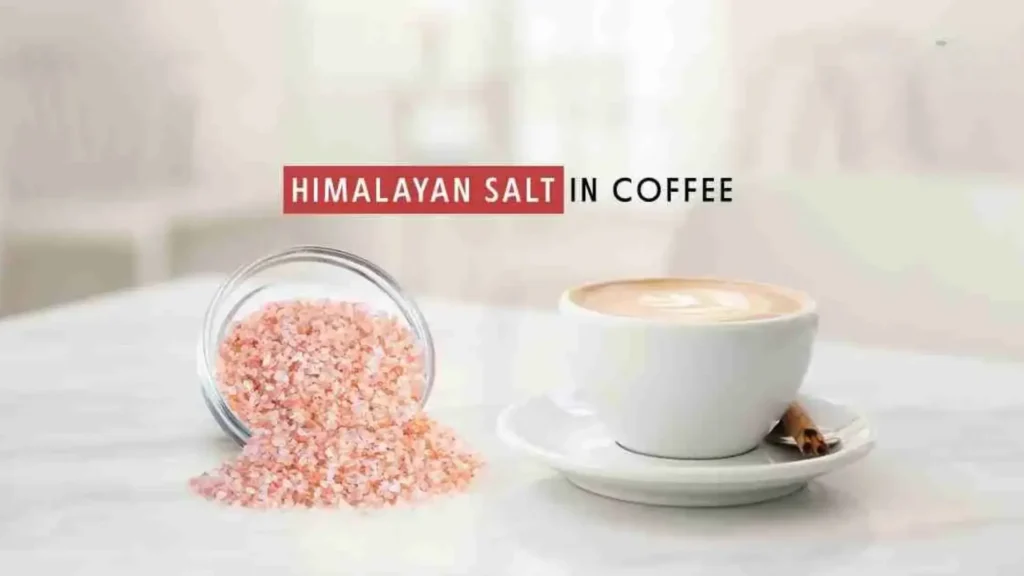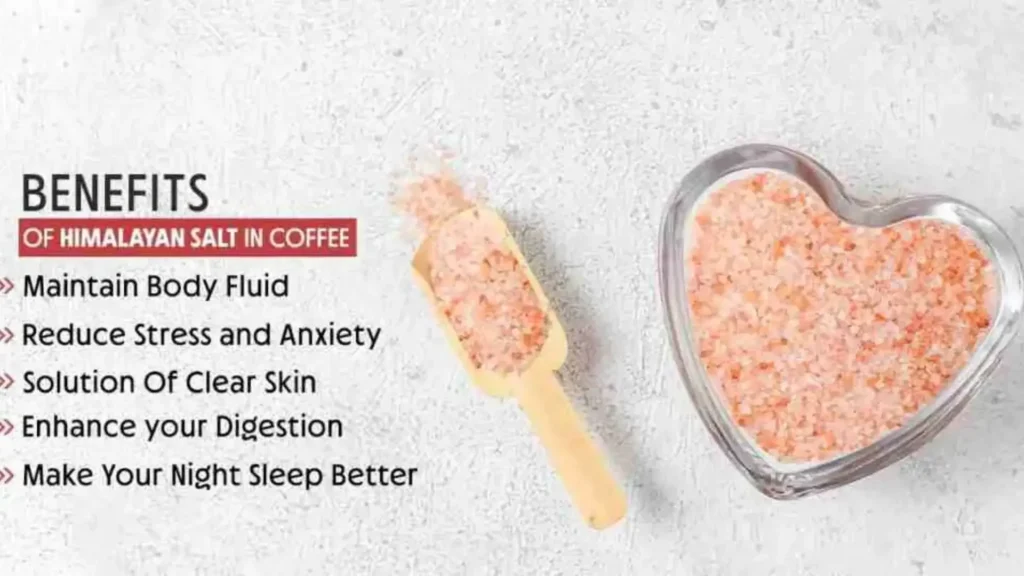Himalayan Salt in Coffee: Benefits, Taste & Why It’s Trending
- Zayan Rauf

Key takeaways
- A pinch of Himalayan salt can reduce bitterness and create a smoother, well-balanced cup of coffee.
- Himalayan salt adds trace minerals that subtly enhance flavor without making the coffee taste salty.
- It may help support hydration and electrolyte balance, especially for morning exercisers or low-carb diets.
- Adding salt can make coffee gentler on sensitive stomachs by balancing acidity.
- Use only 1/8 teaspoon per cup, ideally pure Himalayan pink salt such as Sobaan Salt.
- Safe for daily use in moderation, though those with high blood pressure or kidney issues should limit intake.
Coffee enthusiasts are always searching for simple ways to elevate their daily brew without relying on sugar or artificial flavors. One surprising trend gaining traction is adding a pinch of Himalayan salt to coffee. While it may sound unusual, this small addition is praised for its ability to reduce bitterness, balance acidity, and create a smoother, more enjoyable cup.
If you’re curious about why people are adding salt to their coffee, how it works, and whether it’s worth trying, this guide covers everything. From taste science to nutritional benefits, we’ll walk you through the full picture so you can decide if this trend deserves a spot in your morning routine.

What Happens When You Add Himalayan Salt to Coffee?
Adding a tiny amount of Himalayan salt to your coffee can noticeably enhance its flavor. This effect comes from how our taste buds interpret bitterness. Sodium chloride (salt) naturally suppresses bitter flavors by interacting with specific taste receptors responsible for detecting bitterness [1].
Here’s what a pinch of Himalayan salt does inside your cup:
Reduces Bitterness
Over-extracted, dark-roast, or lower-quality coffee often tastes sharp or bitter. Salt chemically tones down these harsh notes, making the brew smoother.
Enhances Natural Flavors
When bitterness is reduced, the natural sweetness and nuanced flavors of the coffee become more noticeable.
Adds Mineral Depth
Himalayan salt contains trace minerals that may subtly enrich the flavor profile, giving your coffee a more rounded, calming finish.
This flavor-balancing technique is not new; chefs have long added small amounts of salt to desserts to heighten sweetness. The same principle applies beautifully to coffee.
Read More: Discover the Best Himalayan Salt Products for Your Home & Wellness
Does Himalayan Salt Make Coffee Taste Better?
For many people, yes. Himalayan salt doesn’t make the coffee salty, it simply helps balance the taste. If your brew turns out:
- Too bitter or acidic
- Slightly burnt
- Over-extracted
- From instant or low-quality beans
A pinch of salt can transform it into a smoother, more enjoyable drink.
Instead of masking bitterness with sugar, syrups, or cream, salt improves the flavor from the ground up with no extra calories added
Did You Know?
In traditional Turkish culture, brides serve salted coffee to grooms as a subtle character test. If he drinks it politely, it’s seen as a sign of patience and good nature [8].
Key Benefits of Putting Himalayan Salt in Your Coffee

Beyond taste, adding Himalayan salt to coffee offers several additional benefits especially because of its natural mineral makeup.
1. Significantly Reduces Bitterness
The most immediate benefit is smoother flavor. A pinch can neutralize bitterness in strong or dark-roast coffee, making it far more pleasant to drink. This is particularly helpful for people sensitive to bitterness but still wanting a bold brew.
2. May Make Coffee Gentler on the Stomach
Coffee is acidic, which can cause discomfort or acidity for some people. While research continues, evidence suggests some mineral salts help adjust acidity levels [2]. Himalayan salt may help balance your coffee’s pH, making it gentler for those sensitive to acidic beverages.
3. Supports Hydration and Electrolyte Balance
Coffee is hydrating, but caffeine has mild diuretic properties. Himalayan salt contains sodium and trace amounts of electrolytes like magnesium and potassium nutrients essential for fluid regulation [3].
This makes Himalayan salt coffee an interesting option for:
- Early-morning exercisers
- Athletes
- People on low-carb or fasting diets
It provides a boost of electrolytes without adding sugar.
4. Enhances Flavor Without Adding Sugar or Calories
Salt enhances natural sweetness by suppressing bitterness. This helps reduce the need for:
- Sugar
- Creamers
- Flavored syrups
It’s a simple trick for anyone trying to cut back on calories while still enjoying rich, flavorful coffee.
5. Balances Strong and Dark Roasts
If you love intense dark roasts, Himalayan salt can mellow their sharp edges. Instead of masking flavor, it helps bring out the complexity of the beans creating a richer and smoother cup.
6. Contains Dozens of Trace Minerals
Himalayan pink salt is an unrefined salt containing up to 84 trace minerals, including magnesium, calcium, iron, and potassium [4].
While the amount used in coffee is tiny, these minerals:
- Add subtle depth
- Improve flavor
- Avoid the chemical aftertaste of processed table salt
This makes Himalayan salt a superior choice for coffee enhancement.
7. Gentle for Those Drinking Coffee on an Empty Stomach
Many people enjoy their first cup before breakfast. A pinch of Himalayan salt can reduce acidity, leading to a smoother, less irritating drink especially helpful for sensitive stomachs.
Himalayan Salt vs. Table Salt: Which Is Better for Coffee?
Not all salt works the same way in coffee. For best results, experts and coffee lovers prefer pure Himalayan salt over standard table salt.
Why Himalayan Salt Is Better
- Unrefined & natural: retains natural minerals
- No additives: no anti-caking agents or added iodine
- Milder, smoother taste
- Clean dissolving texture
Why Table Salt Isn’t Ideal
- Highly processed and stripped of minerals
- Contains iodine and anti-caking agents that can alter flavor [5]
- Strong, harsh saltiness
- Can overpower coffee easily
For subtle flavor enhancement, Himalayan salt is clearly the better choice.
How Much Himalayan Salt Should You Add to Coffee?
When it comes to salt and coffee, less is more.
Recommended Amount:
A pinch (about 1/8 teaspoon) per 12-ounce cup of coffee.
Many coffee drinkers prefer using pure Himalayan pink salt from brands like Sobaan Salt to ensure a clean flavor and better mineral quality.
You can add it:
Before Brewing
Mix the pinch directly into the coffee grounds. This helps distribute the flavor evenly.
After Brewing
Stir the salt into your cup. This method lets you adjust the amount according to your preference.
If you’re new to the trend, start with a very tiny pinch you can always add more.
Did You Know?
Pink Himalayan salt can support hydration by providing sodium and trace minerals that help balance fluids. Some electrolyte powders even include up to 1,000 mg of sodium for quick hydration making a tiny pinch in coffee a practical boost [9].
Is It Safe to Add Salt to Coffee Every Day?
For most healthy adults, yes. A pinch of salt adds only a small amount of sodium far below daily limits. According to research, moderate sodium intake is essential for normal body function [6].
- acidity
- Have high blood pressure
- Are on a low-sodium diet
- Have kidney issues
For everyone else, adding Himalayan salt to coffee daily is safe when done in moderation.
Who Should Try Himalayan Salt Coffee?
Himalayan salt coffee is especially beneficial for:
- People sensitive to bitter flavors
- Anyone reducing sugar intake
- Coffee drinkers who prefer strong or dark roasts
- Athletes needing light electrolyte support
- Those who drink coffee on an empty stomach
- Individuals looking to enhance instant coffee
Even cognitive benefits are linked to diets rich in minerals and antioxidants components found in Himalayan salt in trace amounts [7].
Read More: The Diverse Types Of Salt For Cooking And How To Cook With Them
Final Thoughts: Should You Try Himalayan Salt in Coffee?
If you’ve ever found your coffee too bitter, acidic, or sharp, adding a pinch of Himalayan salt is a simple, science-backed way to improve your brew. It enhances natural sweetness, smooths harsh flavors, and even supports hydration all without sugar or calories.
This trend is growing for a reason: it works. Whether you’re a coffee connoisseur or simply want a better-tasting everyday cup, this trick is worth trying.
At Sobaan Salts, we believe in elevating natural wellness, one simple habit at a time and Himalayan salt coffee is a perfect example.
References:
- Breslin, P. A., & Beauchamp, G. K. (1997). Salt enhances flavour by suppressing bitterness. Nature, 387(6633), 563.
- Remer, T., & Manz, F. (1995). Potential renal acid load of foods and its influence on urine pH. Journal of the American Dietetic Association, 95(7), 791-797.
- Crichton, G. E., Bryan, J., & Murphy, K. J. (2013). Dietary antioxidant intake, cognitive function and dementia – a systematic review. Plant Foods for Human Nutrition, 68(3), 259-271.
- Drake, S. L., & Drake, M. A. (2011). A comparison of salty taste and time intensity of sea and land salts from around the world. Journal of Sensory Studies, 26(1), 25-34.
- Dasgupta, P. K., Liu, Y., & Dyke, J. V. (2008). Iodine nutrition: iodine content of iodized salt in the United States. Environmental Science & Technology, 42(4), 1315-1323.
- Strazzullo, P., D’Elia, L., Kandala, N. B., & Cappuccio, F. P. (2009). Salt intake, stroke, and cardiovascular disease: meta-analysis of prospective studies. BMJ, 339, b4567.
- Crichton, G. E., Bryan, J., & Murphy, K. J. (2013). Dietary antioxidant intake, cognitive function and dementia – a systematic review. Plant Foods for Human Nutrition, 68(3), 259-271.
- UNESCO Courier (United Nations Educational, Scientific and Cultural Organization), March 31, 2023.
- Does pink Himalayan salt have any health benefits?
Share This Post
Article By

